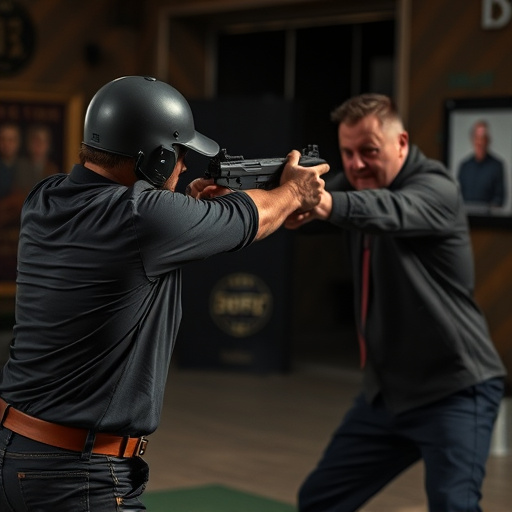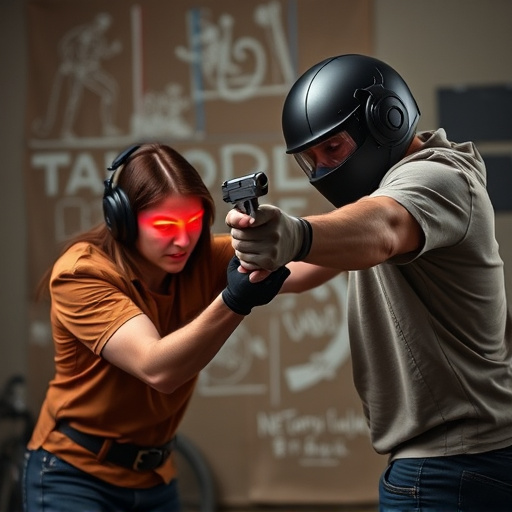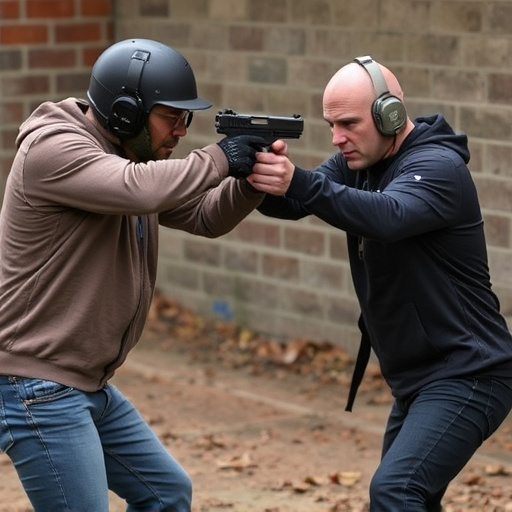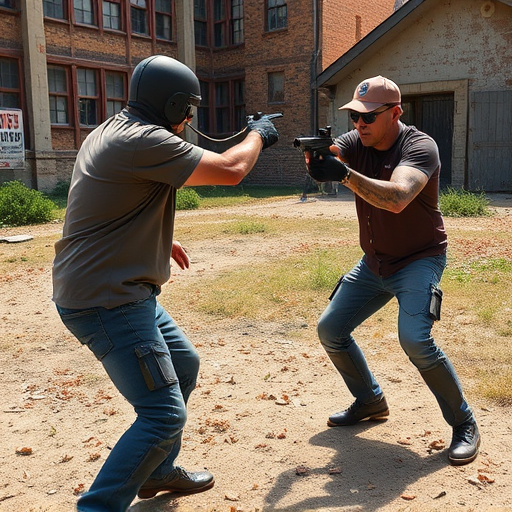Duration of Muscle Incapacity from Stun Guns: Science, Concealment & Legal Factors
Stun guns, popular for self-defense, disrupt muscle control through electric shocks, temporarily inc…….
Stun guns, popular for self-defense, disrupt muscle control through electric shocks, temporarily incapacitating assailants. Their effectiveness and duration vary based on power, target size/age, environment, and legal regulations. The most concealable stun gun designs balance discretion with power, fitting in hands or hidden within everyday items. These compact devices deliver potent jolts with advanced triggers for quick deployment while adhering to legal limits on voltage and energy levels.
“Uncovering the science behind muscle incapacitation caused by stun guns reveals a complex interplay between power and time. This article explores critical factors affecting the duration of muscle weakness post-stun, with a focus on the evolving landscape of concealed self-defense. We delve into the latest research, examining how various design elements, including the most concealable stun gun models, influence both effectiveness and discretion. Additionally, we navigate legal considerations that impact the strategic use of these devices.”
- Understanding Muscle Incapacitation: The Science Behind Stun Guns
- Factors Influencing Duration of Muscle Weakness from Stun Gun Use
- Most Concealable Stun Gun Designs: Balancing Power and Discretion
- Legal Considerations: Impact on Duration of Muscle Incapacitation
Understanding Muscle Incapacitation: The Science Behind Stun Guns

Understanding Muscle Incapacitation: The Science Behind Stun Guns
When it comes to self-defense, stun guns have emerged as a popular choice due to their ability to temporarily incapacitate an assailant. The primary mechanism of action involves delivering an electric shock that disrupts muscle control, leading to loss of balance and coordination. This process is known as muscle incapacitation, which can last anywhere from several seconds to a few minutes, depending on the device’s power output and the individual’s tolerance.
Stun guns operate by using specialized electrical circuits to generate a high-voltage, low-current electric pulse. This pulse is then transferred through metal prongs or probes that make contact with the target’s body. The current interferes with the nervous system’s ability to send signals to muscles, resulting in muscle spasms and temporary paralysis. The most concealable stun gun designs prioritize both functionality and discretion, making them attractive options for personal safety without drawing undue attention.
Factors Influencing Duration of Muscle Weakness from Stun Gun Use

The duration of muscle incapacitation after using a stun gun can vary significantly depending on several factors. One of the primary influences is the power output and voltage of the device, with higher specifications generally resulting in longer periods of weakness. Additionally, the specific design of the stun gun plays a crucial role; for instance, the most concealable stun guns often employ advanced technologies to deliver a powerful yet precise shock, potentially affecting the duration of muscle paralysis.
Another critical factor is the target area and size of the individual. Larger or more muscular individuals may experience shorter durations of incapacitation due to their higher nerve density and overall strength, while smaller or older individuals might remain vulnerable for extended periods. Environmental conditions, such as temperature and moisture, can also impact the effectiveness and duration of the stun gun’s effects, with varying levels of humidity potentially affecting muscle response times.
Most Concealable Stun Gun Designs: Balancing Power and Discretion

The most concealable stun gun designs are those that prioritize balance between power and discretion. These devices are crafted to fit comfortably in hands or easily hide within everyday items like wallets, keychains, or even jewelry, making them ideal for personal protection in situations where size and appearance matter. Despite their compact form factors, these stun guns pack a significant punch, delivering high-voltage jolts capable of temporarily incapacitating an aggressor.
This balance is achieved through innovative engineering that combines lightweight materials with robust circuitry. Advanced trigger mechanisms ensure quick deployment without compromising safety features. As a result, users can count on these discreet stun guns to provide swift and effective protection in close-quarters encounters, all while maintaining a low profile.
Legal Considerations: Impact on Duration of Muscle Incapacitation

The duration of muscle incapacitation caused by a stun gun is influenced by various factors, including legal considerations. In many jurisdictions, stun guns are regulated under specific laws and regulations that dictate their use, possession, and sale. These laws can impact how long a stun gun’s effects last, as manufacturers often design devices with specific power outputs to comply with legal limits. For instance, the most concealable stun gun designs might deliver lower jolts compared to larger, more powerful models, resulting in shorter periods of muscle incapacitation.
Additionally, legal restrictions on stun guns can influence their effectiveness in real-world scenarios. Some regions have strict guidelines on the voltage and energy levels allowed, which can affect the device’s ability to disable an assailant quickly. As a result, users might need to employ different tactics or additional self-defense strategies to ensure safety when facing armed threats, considering the potential limitations of their stun gun’s muscle incapacitation duration.
In conclusion, understanding muscle incapacitation duration from stun guns involves a multifaceted approach. By delving into the science behind these devices, considering factors that influence their effectiveness, and exploring legal implications, we can better appreciate the impact of stun guns, especially in terms of concealing powerful yet discrete designs like the most concealable stun gun. This knowledge is crucial for both personal safety and navigating the evolving legal landscape surrounding stun gun use.


